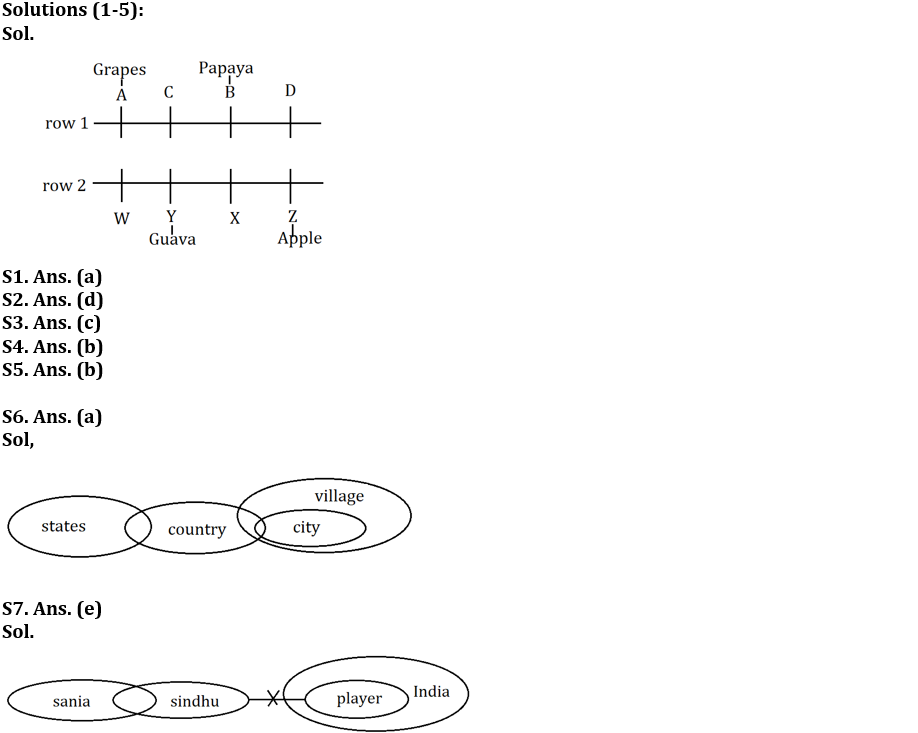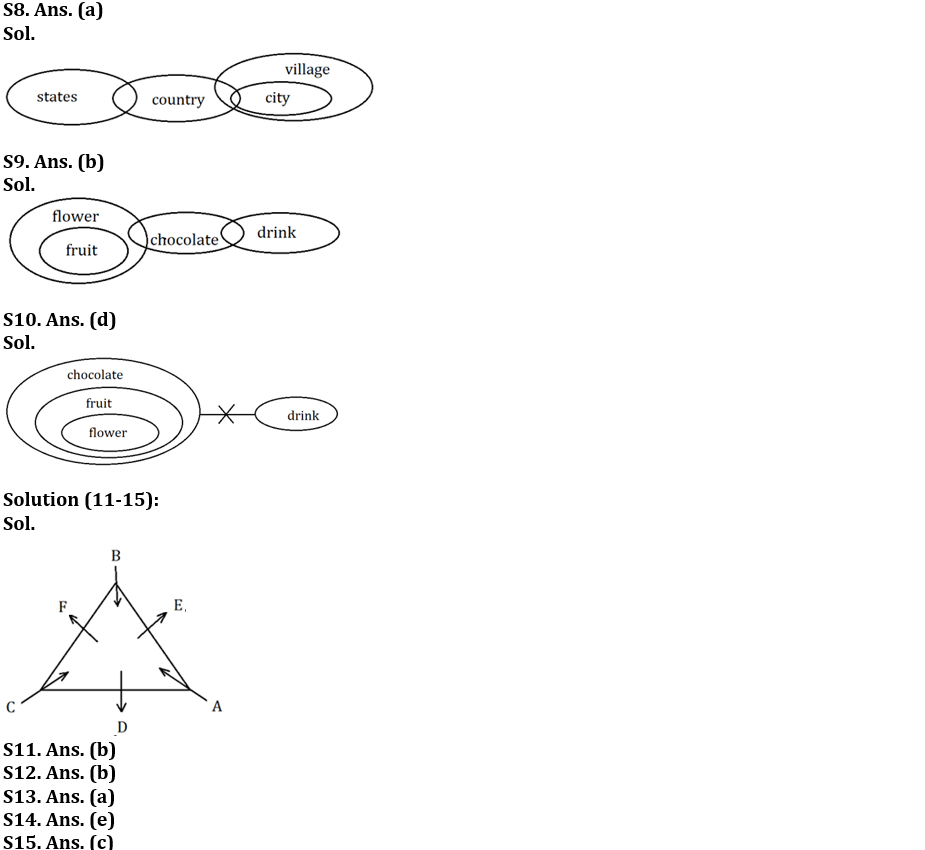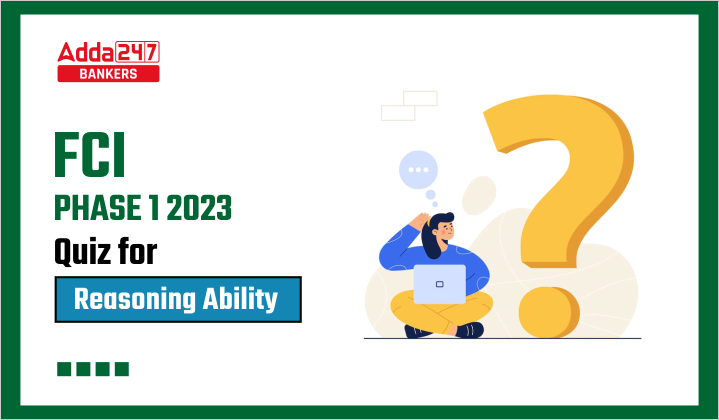Directions (1-5): Study the following information carefully and answer the questions given below:
Eight persons are sitting in two parallel rows facing each other. A, B, C and D are sitting in row 1 are facing south and W, X, Y and Z are sitting in row 2 and are facing north. Four of them likes fruits i.e., Papaya, Apple, Grapes and Guava. No two persons who likes fruits are sitting adjacent to each other and opposite to each other.
B sits second to the left of A. B faces the immediate neighbor of Z who sits at one of the extreme ends of the row. C faces Y. W sits second to the left of X. B likes Papaya. Z likes Apple. The one who likes Guava does not face in the south direction.
Q1. Who among the following likes Grapes?
(a) A
(b) X
(c) D
(d) C
(e) W
Q2. Who among the following persons faces the one who sits immediately left of Z?
(a) A
(b) C
(c) D
(d) The one who likes Papaya
(e) The one who likes Grapes
Q3. Four of the following five are alike in a certain way and hence form a group, which of the following does not belong to the group?
(a) A
(b) D
(c) X
(d) Z
(e) W
Q4. Which of the following statement is true?
(a) Y likes Grapes
(b) The one who faces X likes Papaya
(c) None is true
(d) A sits immediate left of C
(e) X sits second to the left of W
Q5. Number of persons sitting to the left of D is the same as the number of persons sitting to the right of _____?
(a) C
(b) Z
(c) W
(d) B
(e) Y
Direction (6-10): In each of the questions below some statements are given followed by some conclusions. You have to take the given statements to be true even if they seem to be at variance with commonly known facts. Read all the conclusions and then decide which of the given conclusions logically follows from the given statements disregarding commonly known facts.
(a) If only conclusion I follows.
(b) If only conclusion II follows.
(c) If either conclusion I or II follows
(d) If neither conclusion I nor II follows.
(e) If both conclusions I and II follow.
Q6. Statements: Only a few states is country.
Some country is city.
All city is village
Conclusions: I. All country can be city
II. All states can be country
Q7. Statements: Some Sania is Sindhu
No Sindhu is Player
All Player is India
Conclusions: I. Some Sindhu can be India
II. Some Sania is not player
Q8. Statements: Only a few states is country.
Some country is city.
All city is village
Conclusions: I. All country can be states
II. Some village can be country
Q9. Statements: Only flower is fruit
Some flower is chocolate
Some chocolate is drink
Conclusions: I. Some fruit can be drink
II. Some flower can be drink
Q10. Statements: All flower is fruit
All fruit is chocolate
No chocolate is drink
Conclusions: I. Some flower can be chocolate
II. Some fruit can be drink
Directions (11-15): Study the following information carefully and answer the questions given below:
Six persons are sitting in a triangular table such that three of them sits at the corners of the table and three of them sits at the middle of sides of the table. The one who sits at the corner faces towards the center and the one who sits at the middle of sides of the table faces outside the center of the table.
Only one person sits between A and B. B sits second to the left of C. E sits second to the right of F who is not an immediate neighbor of A. D faces outside the center of table.
Q11. Who among the following is third to the right of D?
(a) A
(b) B
(c) C
(d) E
(e) F
Q12. Four of the following five are alike in a certain way and hence form a group, which of the following does not belong to the group?
(a) D-C
(b) C-F
(c) B-F
(d) F-B
(e) A-E
Q13. If A and B interchange their positions, then who among the following sits second to the left of B?
(a) C
(b) D
(c) E
(d) F
(e) None of these
Q14. Which of the following statement is true?
(a) F faces towards the center of the table
(b) C sits immediate right of F
(c) A faces outside the center
(d) None is true
(e) E sits second to the left of D
Q15. If the persons sit according to the English alphabetical series starting from A in the clockwise direction, then the position of how many does not change, excluding A?
(a) None
(b) Two
(c) One
(d) Three
(e) Four
Solutions







 GA Capsule for SBI Clerk Mains 2025, Dow...
GA Capsule for SBI Clerk Mains 2025, Dow...
 The Hindu Review October 2022: Download ...
The Hindu Review October 2022: Download ...
 Important Days in April 2025, List of Na...
Important Days in April 2025, List of Na...




